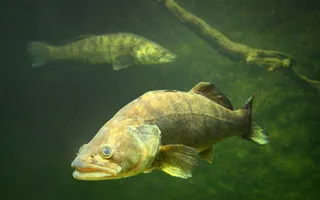Sterlet and our canals
A non-native species, the sterlet is popular in the UK with aquarists and pond fish-keepers. They live in ponds and lakes, although they have spread to some rivers (a habitat that they favour in their native range). It's possible that introductions to the wild have come from well-intentioned aquarists and pond-keepers releasing fish that have grown too large for their tank or pond.
In recent years, the sterlet has become very scarce in parts of its native range as it’s been exploited for food, like caviar.
The sterlet is from the sturgeon family – an interesting group of primitive fish that are quite distinct from all the other living bony fish.
How to identify a sterlet
Sterlets are relatively small compared to their beluga sturgeon cousin, which can reach 1,220kg in weight and 4.24m in length.
Usually sandy brown to dark olive, sterlets are elongated with no scales. Instead, they have a characteristic row of bony plates that run along the sides of the body. The tail is upturned and asymmetric. They have long, pointed heads with an upturned snout and four sensitive barbels.
Lifecycle of a sterlet
Sterlets live long lives, and males sexually mature at three to seven years; females at four to 12 years. They spawn in the spring, laying up to 40,000 eggs. However, sterlets don’t breed in this country.
How to catch a sterlet
Sterlets aren’t present in our canal network but are found in some totally enclosed still waters.






